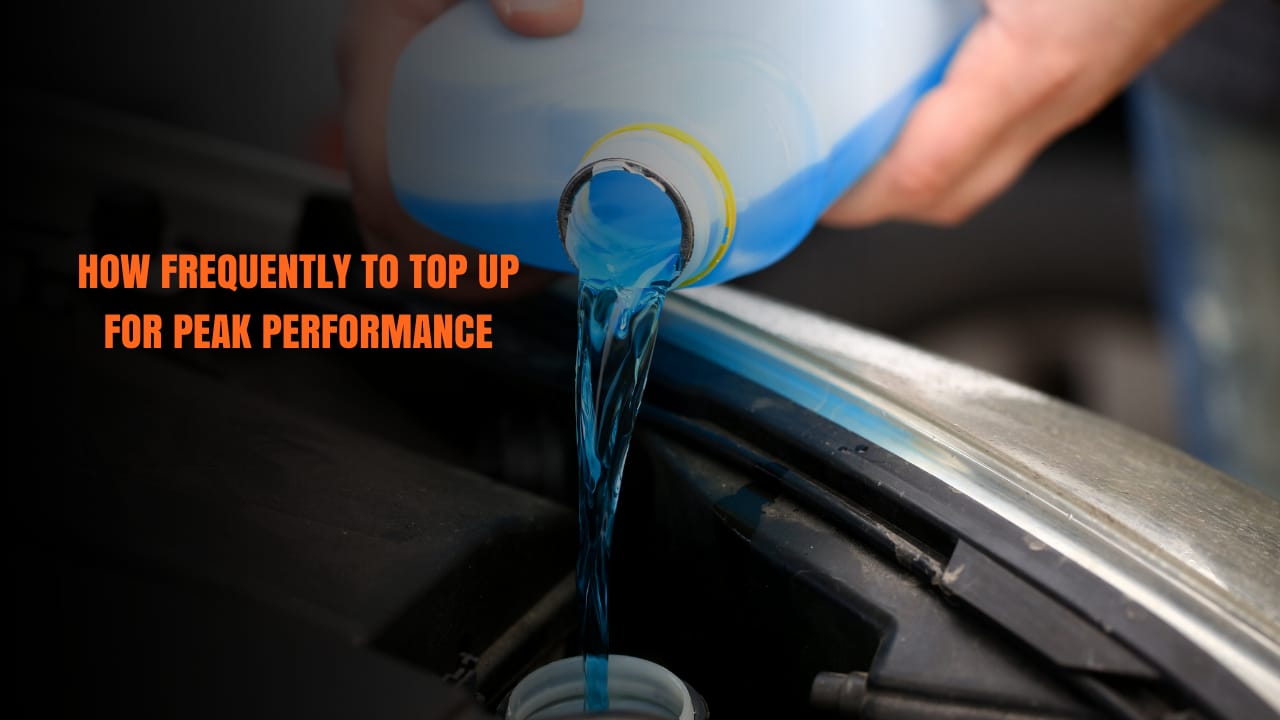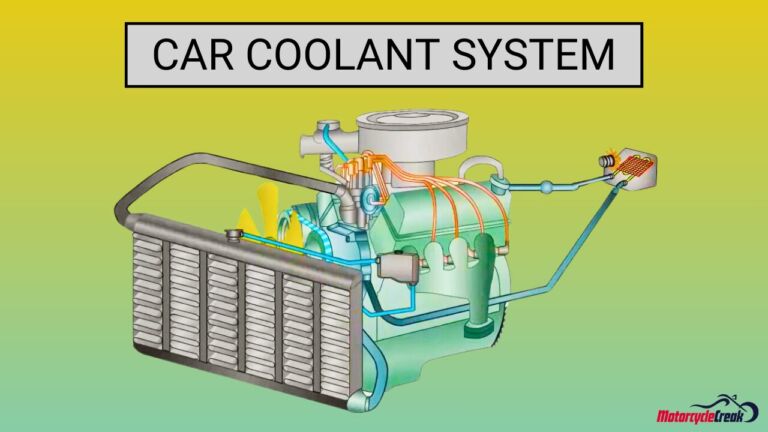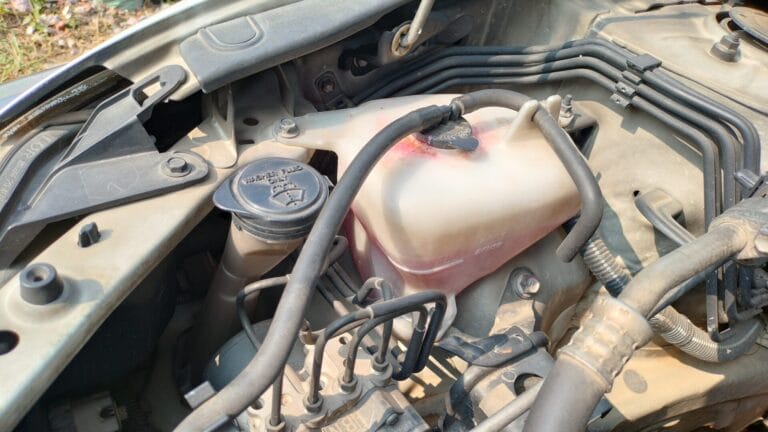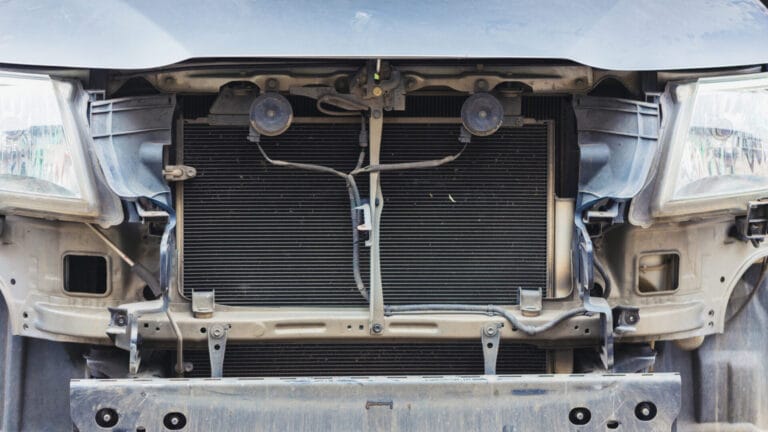How Long Should I Wait To Put Coolant in My Car
In our last article, “Can You Drive with a coolant leak,” we learned lots of things related to coolant leaks, including potential risks and how to handle the situation. Today, we’ll learn the waiting time before adding coolant to your car.
Whether it is a coolant leak, an overheated engine, or you have run out of coolant, before adding coolant to your car, you should wait for 20-45 minutes after turning off the engine. The radiator cap will be too hot to touch that it may burn your hand, so let the engine and reservoir cool down first.
The waiting time may vary based on ambient (driving speed, weather conditions, etc.) and engine temperature.
If you were out for a short trip on a cold day at low speed, the engine shouldn’t be too hot, and in that case, 20-30 minutes will be enough to cool down. But if it were a long drive at a higher speed on a hot sunny day, obviously, it would take a long to cool down. Too hot an engine may take up to 45 minutes to cool down.
So first, check if the radiator cap is cold enough to touch, and then put the coolant following the right procedure. You should never put coolant on a hot reservoir; it can cause steam to spill out, impose severe burns, and sometimes even explode.
Can I Drive Right After Adding Coolant?
No, you can’t drive right after adding coolant. Ensure the coolant is topped up at the proper level, let the engine run for a few minutes, inspect for coolant leaks, check the temperature gauge, and you are ready to hit the road.
Here’s the lowdown:
1. The Waiting Game:
While adding coolant itself doesn’t require any downtime, it’s a good idea to let your engine run for a few minutes to allow the new coolant to circulate, mix, and distribute properly. Think of it as giving your car a little warm-up before hitting the road. This will help ensure that all areas of the engine are properly cooled and lubricated.
2. Check the Coolant Levels:
As we know, coolant is your car engine’s best friend; it keeps the engine cool and running smoothly. So, you must open the coolant tank to check the coolant level in every two weeks. If low coolant, immediately refill the coolant system with fresh coolant. While adding coolant, ensure you’ve hit the sweet spot on the dipstick. Overfilling and underfilling are both problematic, so ensure Goldilocks is at the “just right” level for optimal performance.
3. Search for Potential Leaks
If there is any leak, you can easily scan it beneath your car while the engine is running. There is no need to stop the car mid-ride to check for puddles or drips.
4. Keep an Eye on the Gauge:
When others are fine, it’s time to keep a friendly eye on your temperature gauge. It’s like your car’s personal mood ring, and if it stays within the normal range, you’re in the clear. If you have an overheating engine, the gauge will give you a red signal.
5. A Brief Test Drive:
If it’s a routine coolant top-up, now you’re good to hit the road. But for cars that have undergone substantial cooling system repairs or if there’s any uncertainty about their health, a short spin is a must. This mini adventure serves as a final check, ensuring all components are humming along smoothly before you embark on your journey.
Can I Add Coolant While the Engine is Running?
No, you can’t add coolant while the engine is running. Adding coolant is far away; trying to open the reservoir cap while the engine is running has a risk of a serious burn.

Coolant helps regulate the engine heat by circulating through the engine and radiator. When the engine is running, the process of heat generating and transferring is still continuing, and there is pressure build-up in the system. So, when you try to open the radiator cap, you risk burning your hand, too hot to touch, and getting sprayed with hot coolant or steam.
Further, the coolant inside the radiator is boiling and pressurized; just when you open the cap, pressurized steam and water will escape (possibly higher than 100C, due to the pressure), blow off explosively, and scald anyone/anything nearby.
On top of that, adding new coolant to the already pressurized and hot coolant will cause temperature differences that will potentially crack the engine block or other components. Not only could this be expensive to repair, but it could also leave you stranded on the side of the road.
So it’s better you stop the car, turn off the engine, and let it cool down for a minimum of 30 minutes before adding any coolant.
Is It Safe To Add Cold Coolant To A Hot Engine?
No, it is not safe to add cold coolant to a hot engine; it will cause stress on the engine components, creating a thermal shock.
When hot engine parts come into contact with cold coolant, water, or air, they rapidly contract due to the temperature difference. This rapid contraction can cause cracks or fractures in the engine components, such as the cylinder head or engine block. These cracks weaken the structural integrity of the engine, leading to potential leaks or even catastrophic failure if left unaddressed.

So, when the engine is hot, pouring cold coolant or any cold liquid is not recommended. You must wait for your engine to cool down before adding coolant. A hot and cold coolant mixture can result in thermal shock and damage the engine. Give it some time to relax and chill out, and once it’s cooled off, go ahead and add the right type of coolant following the user manual to avoid any risk.
Can I Put Water in the Car’s Radiator?
Yes, you can use water to cool down the engine, but you can’t continue driving for too long with water as a coolant. It is a makeshift solution when you are at gunpoint.
Coolant or radiator fluid we use is a 50/50 mixture of distilled water and antifreeze. When the engine runs, water absorbs its heat and transfers it to the radiator. During this process, antifreeze properties of the coolant prevent the water from boiling or freezing.

When you use water alone, it can only cool down the engine for a short period; it will be frozen in low temperatures and boiling in high temperatures, causing more damage to the engine. So, use water (avoid tap water to prevent corrosion) in emergencies when you have a low coolant level. However, as soon as you can, arrange and put coolant fluid in the car radiator.
However, just because you can put water in the car radiators, don’t make the mistake of adding it to a hot engine. Let the engine come to a warm temperature, and then put the water in the coolant reservoir tank to avoid injuries and engine damage.
How Long Does it Take for a Radiator to Cool Down?
When the engine runs, the coolant circulates and absorbs its heat, then carries it to the radiator, where it is cooled down before returning to the engine again. When there’s low or coolant leaking in the radiator, the engine can’t properly cool down. It produces more heat than the radiator can handle, struggling with its cooling duties and becoming overheated.

Generally, a radiator can take between 20 minutes to a couple of hours to cool down completely after the engine is turned off. If your outing was a brief spin in town, the radiator won’t be scorching hot; 20 to 30 minutes is enough. But if you’ve been pushing the speedometer on the motorway, you must wait around an hour for the radiator to cool down sufficiently.
However, on a hot summer day, it will take longer for the radiator to cool down compared to a cooler day.
If you don’t have the rush, give your engine a break and let it cool off naturally.
How Can I Cool Down My Engine Fast?
Patience!!!
I know waiting for your car to cool down can feel like an eternity, especially when you’re in a hurry. As we know, after turning off the engine, it takes 20-45 minutes to cool down. It’s a long time when you are stuck in a mid-road.

So, what can you do to cool down your engine faster?
You can follow some nifty tricks to speed up the engine cooling process, like parking the car in the shade, slightly opening the hood, turning off the A/C, turning on the heater, etc., but you can’t do it in a rush. Keep yourself calm, and follow the tricks below.
Turn Off the Air Conditioner
As soon as you notice your engine overheating, turn off the air conditioning and roll down the window.
When the air conditioning is running, it puts an extra load on the engine, causing it to work harder and generate more heat. By turning off it, you are reducing the load on the engine, which means less energy is being used to power the compressor. This allows more energy to be directed towards cooling down the engine itself. Additionally, when the AC is turned off, the fan that blows air over the radiator can work more efficiently, allowing for better heat dissipation.
Heater Trick: Turn on The Heater
Turning on a heater may seem counterintuitive when trying to cool down an engine, but it’s a clever move in the cooldown playbook.
When you turn on the heater, it activates the thermostat, which opens up a valve that allows coolant to flow through the heater core. This creates a sort of mini-cooling system within your car’s engine. The hot coolant from the engine gets circulated through the heater core, and as it passes through, it releases heat into the cabin of your car.
Voila! The engine cools down faster because now there’s more coolant flowing through it.
Pull Over in a Shady Place
When your car is parked in direct sunlight, the temperature inside the vehicle can rise rapidly, including under the hood where the engine is located. This can cause the engine to retain heat even after you’ve turned off the ignition. But when you park your car in the shade, it provides a cooler environment for your vehicle, reducing the strain on your cooling system and allowing the engine to dissipate heat more efficiently. The shade ensures better airflow around the engine bay; “shaded parking = quicker cooldown.”
Slightly Open The Hood
Let’s unveil a cooling secret! Leave the hood slightly open. It allows hot air to escape from the engine compartment more efficiently and also lets fresh air circulate in the engine, making the cooldown act even swifter. This increased airflow helps to dissipate heat from the engine at a faster rate, which can help prevent overheating and keep your car running smoothly. But don’t open it fully, either it can blow out hot steam.
While these tricks can make your engine cooling down process faster, never do anything in a rush. Give the engine enough time to cool down, and avoid touching or opening the reservoir cap until it’s warm to touch; forget about adding coolant on a hot engine.
However, the cooling time can vary depending on a few factors, such as the outside temperature, the size of your engine, how hard you’ve been pushing your ride, and even the type of coolant used.
How to Add Coolant to Your Car
So, now we know the waiting time for adding coolant, but how to add coolant to your car? You don’t know? Then let’s know shortly in a few simple steps.
Cool Down and Park:
Park your car on a shady, flat surface for better gauge accuracy. Leave the car to cool down for a minimum of 20 minutes or as it demands to cool down.
Right Coolant
While the engine is cooling down, check the car manual to know about the type of coolant your manufacturer recommends. Always try to use the specific type of coolant mentioned in your owner manual.
Pop the Hood
When you have the right type of coolant and the engine has also cooled down, it’s time to pop the hood. Then, find the coolant reservoir, or you can also add the coolant directly to the radiator.
Remove the Cap
Unscrew the reservoir cap (when cooled off); sometimes, you may hear hissing when the pressure is released. You can use thick towels, one of them laid out across the entire area around the cap and one or more folded in layers at the point of the cap itself, press down forcefully on it, and turn.
Flush the Radiator
Locate the radiator drain plug and place a container underneath. Open the plug or hose, and let the old coolant drain out. With the drain open, run a hose into the radiator and let water flow through until it runs clear. Start the engine and let it run for a minute to circulate water through the system. Coolant flush or radiator flush, whatever you say, is done. Close the drain plug or reconnect the hose securely.
Add Coolant
If you are adding coolant to the reservoir, use a funnel for precision, and add coolant until just below MAX or FILL LINE. Hissing is normal; wait for it to subside. You can also pour car coolant directly; in that case, pour the coolant into the radiator’s pipe until you reach just beneath the pipe’s opening lip.
Final Check
Now screws back the reservoir or radiator wherever you have to add the coolant. Make sure it’s tightly secured. Then, run the engine for a few minutes and check if there is any leak. Meantime, coolant will circulate in the engine, and you will be ready to drive again.
Is Adding Coolant to My Car the Solution to the Electrical Issue?
Adding coolant to your car may not be the solution to the electrical issue you’re facing. While coolant ensures the engine stays cool, it doesn’t directly impact the key turns off car problem. It’s recommended to consult an automotive expert or mechanic who can diagnose and address the underlying electrical issue for a long-term solution.
How Often Should I Top Up My Coolant/Antifreeze?
Adding coolant is like giving your car a refreshing drink, preventing it from getting overheated and keeping all systems running smoothly. But the million-dollar question remains: when should we quench our car’s coolant thirst?
Knowing the right time for topping up your coolant is essential. Adding coolant too soon or too late is similar to offering that revitalizing drink before thirst strikes or waiting until dehydration sets in – neither is an ideal scenario.

However, don’t get worried because modern car don’t need coolant so often, only when the coolant level goes under the minimum line. Now, how long it will take depends on how long you have driven. If it’s your first ride, I mean, a new car can run 60,000 miles with the coolant it comes with. After that, you have to top up it after every 30,000-mile ride. Additionally, it’s best to check the coolant level every two weeks. If you have enough engine coolant, then you should check the quality as well. If the coolant has become dirty, you should drain and refill it.
Conclusion
Understanding the importance of waiting before adding coolant to your car is very important. While it may seem the right solution to add coolant immediately when you notice low levels, exercising patience is key. You must wait at least 30 minutes for your engine to cool down. This will eliminate the risk of thermal shock and potential damage.
By following this simple car maintenance, you can maintain the optimal performance and longevity of your vehicle’s cooling system. Remember always to prioritize safety and consult with a professional if you have any concerns. Your car’s well-being is worth the wait and care.






